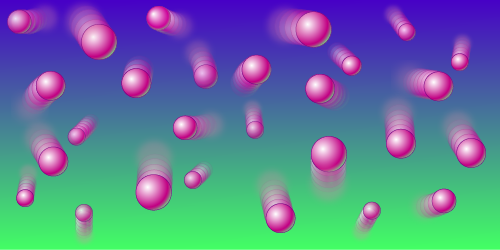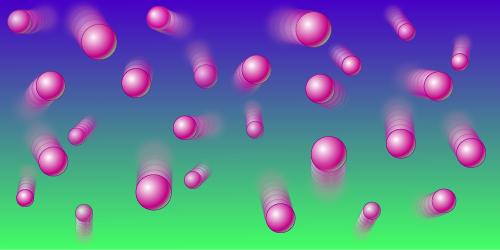In, Yet Out of Equilibrium
For a physicist, swarming bacteria and stampeding buffalo herds bear a striking resemblance to a gas of particles. Although such “active matter” systems are inherently out-of-equilibrium (the particles constantly consume energy), physicists have been surprisingly successful at modeling them with the well-developed tools and concepts of equilibrium statistical physics, like pressure and temperature. To better understand when equilibrium physics is applicable, Étienne Fodor from the University of Paris Diderot, France, and colleagues theoretically analyzed a popular active-matter model consisting of self-propelled particles. The results will help define when equilibrium concepts and methods are applicable to active matter systems and when they aren’t.
The group analyzed self-propelled particles that move constantly and dissipate their energy by interactions with a surrounding fluid. By tuning the parameters in their model, they were able to look at particle systems with different “persistence” times—the time it takes for particle motion to appear random rather than directed. When the persistence time is close to zero, the particle motion looks a lot like the collisions between particles in a liquid (Brownian motion). Conversely, when the persistence time is very long, the dynamics are not reversible, and the authors observe truly nonequilibrium effects. However, particles characterized by an intermediate persistence time exhibit less clear-cut behavior. Here, the team’s calculations indicate that the particle dynamics is reversible and no entropy is produced—a signature of equilibrium systems. Yet the system is not described by the Boltzmann distribution, as expected if it’s in thermal equilibrium. In this intermediate regime, the particles are in an effective equilibrium, so equilibrium concepts and methods can still be employed.
The team’s analysis provides preliminary guidelines for when equilibrium statistics can describe an active matter system. But other self-propelled particle models will need to be analyzed to determine if the researchers’ findings are general.
This research is published in Physical Review Letters.
–Katherine Wright
Katherine Wright is a Contributing Editor for Physics.





